
Introduction
Today on our test bench we see a mid-range AMD-based offering, with the ASUS TUF Gaming Radeon RX 6700 XT OC Edition 12GB GDDR6. The Radeon RX 6700 XT was launched on March 17th, 2021 for an MSRP of $479 USD, with custom models commanding price premiums. This release was meant to bolster the Radeon 6000/RDNA2 lineup with a mid-range presence.
To that end, AMD cut down the Navi 21 die in order to produce a more cost-efficient piece of silicon for the Radeon RX 6700 XT series, also known as Navi 22. AMD’s reference specifications call for this GPU are 2,321 MHz Base clock, 2,424 MHz Game clock, 2,581 MHz Boost clock, with the GDDR6 memory clocks set to 2000 MHz or 16 Gbps.
Radeon RX 6700 XT / Navi 22 / RDNA2
Within this silicon die we have 2560 Stream Processors, 64 Render Output Units, and 160 Texture Mapping Units. Clock speeds are increased substantially when compared with the Radeon RX 6800 XT and Radeon RX 6900 XT. With the aforementioned video cards, we saw reference clocks set at 1825 MHz base clock, a 2015 MHz game clock, and a boost clock of 2250 MHz. Whereas the reference Radeon RX 6700 XT sets the base clock at 2321 MHz, our game clock is set to 2424 MHz, and a maximum boost clock of 2581 MHz. These clock speed gains really are impressive and show that AMD has come a long way with its RDNA2 architecture.
AMD’s Infinity Cache is retained, albeit with a smaller 96MB vs Navi 21’s larger 128MB of Infinity Cache. This silicon is paired with 12GB of GDDR6 video memory on a 192-bit bus and delivering 384 GB/s of memory bandwidth. While that bus width may seem anemic, it’s important to remember that this memory system is aided by 96MB of Infinity Cache. All of these reductions seen in Stream Processors, ROP’s, TMU’s, Infinity Cache, and bus width make sense given the increased clock speeds and 1440p gaming performance goals that AMD set out to meet.
ASUS TUF Gaming Radeon RX 6700 XT OC Edition
ASUS describes TUF as:
The TUF GAMING Radeon RX 6700 XT is a tenacious beast with a tough metal exterior, super-efficient cooling, and components that offer enhanced endurance. An all-metal shroud houses three powerful axial-tech fans with dual ball fan bearings and extra blades. Under the exoskeleton, a thick heatsink keeps thermals under tight control and TUF components, selected for maximum durability and performance, keep the card ahead of the pack. You asked for a mean machine… this one is ready for action.
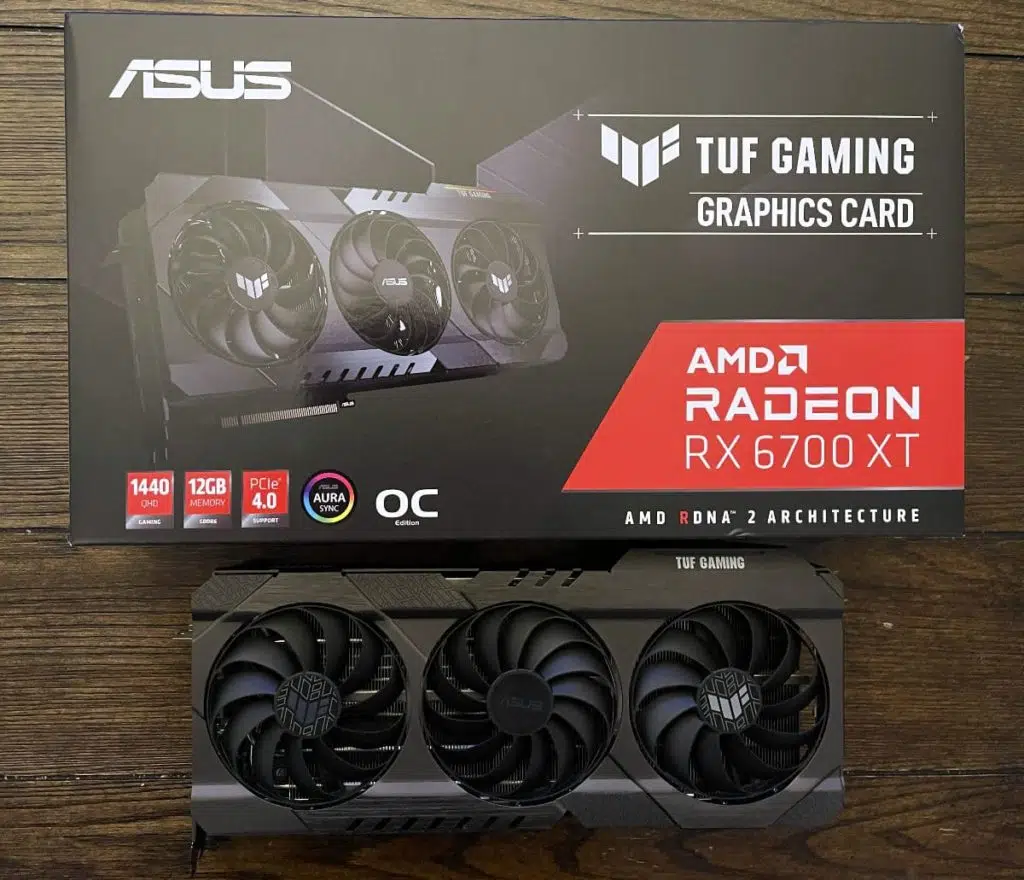
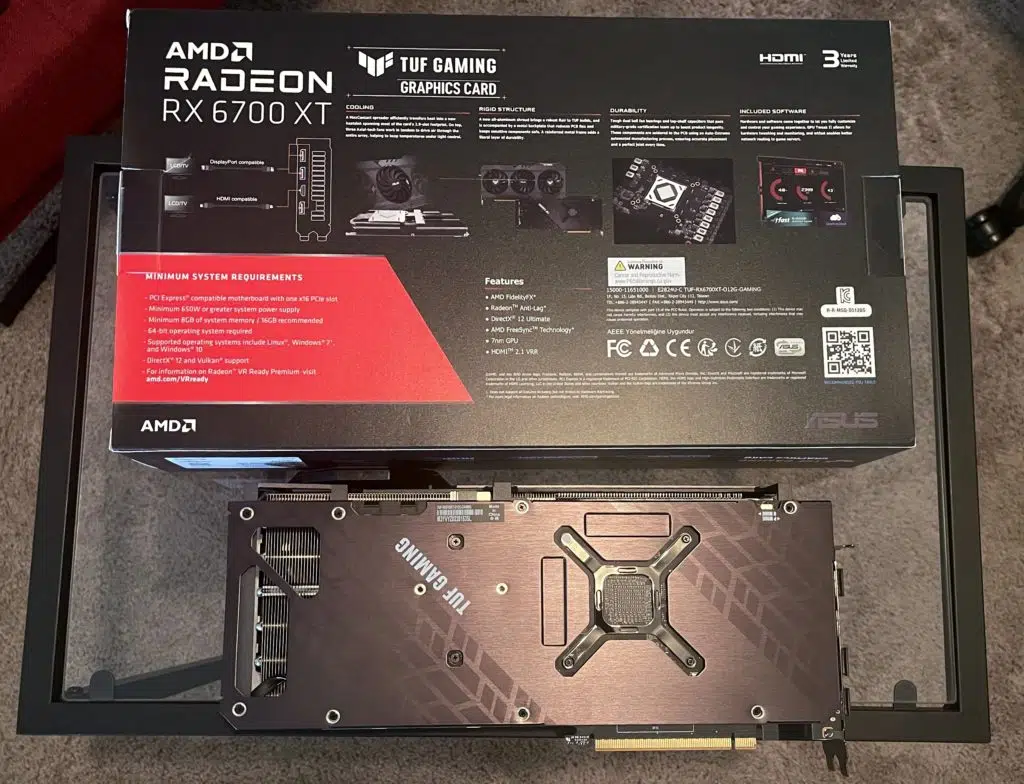

The TUF-RX6700XT-O12G-Gaming is one of the highest-end models of the Radeon RX 6700 XT that ASUS offers, with only the ROG STRIX lineup commanding a higher tier position on the totem pole. With our TUF-RX6700XT-O12G-Gaming we see a much more muted look but one that still manages to maintain a high premium feel even in a mid-range product.
ASUS has bumped the clocks up when compared to the AMD reference specifications that we listed above. On the TUF-RX6700XT-O12G-Gaming we see a 2,418 MHz (+4%) Base clock, 2,514 MHz (+4%) Game clock, and a 2,622 MHz (+2%) Boost clock, memory stays at stock specifications. These increases are decent for a factory overclock especially considering that ASUS still has its ROG STRIX OC model as its top model to contend with. This entire package is given a 144-hour validation program, as per ASUS’s marketing, which ensures that the cards are compatible with the latest games while also maintaining max clock speeds.

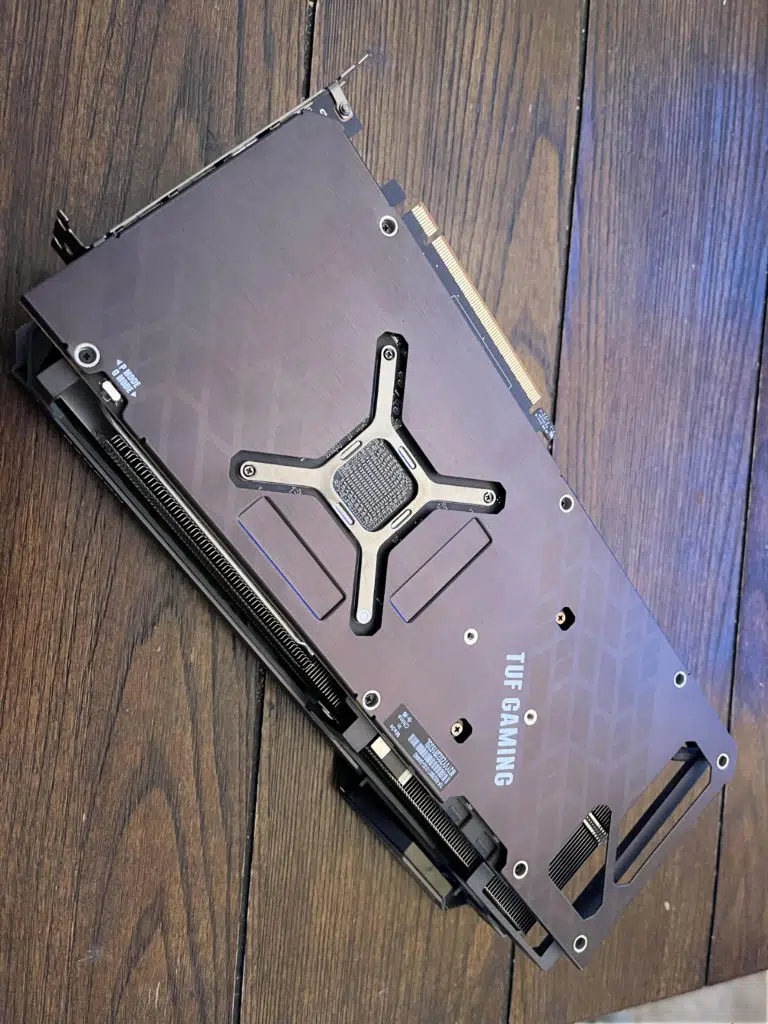

ASUS went with a 2.9 slot design (essentially a triple slot video card) for the TUF-RX6700XT-O12G-Gaming. The large cooling solution utilizes several nickel-plated copper heat pipes paired with a heavy helping of cooling fins that utilize most space under the shroud. We are not seeing a card that’s under-utilized and unnecessarily thick as the industry has produced before.
ASUS has seen fit to utilize a vented PCB and metal backplate which helps reduce recirculated hot air from negatively impacting cooling performance. We again see mention of ASUS’s MaxContact heat spreader design, which ensures a super flat surface for excellent thermal transfer from the GPU die to the heatsink. We also noticed that ASUS implemented a dual BIOS design in this model as well, a nice bonus that is positioned in a more friendly to reach area of the card.
These designs are further assisted with ASUS’s own Axial-tech fan design which was further iterated on with 11 fan blades on the outer fans, and 13 fan blades on the interior fan. This center blade also is given a full-height outer ring around the 13-blades to create more static pressure atop the actual GPU die. While each 11-blade fan was designed with the intention to create more lateral intake and provide more uniform airflow throughout the entire fin-stack of the heatsink.
ASUS has seen fit to include its 0db Fan feature that shuts the video card’s fans off at or below 55c, fans which reduces noise drastically. One last note to add regarding the fans is that ASUS continues to implement a single-center fan that operates with the opposite rotational direction of the two outer fans, according to ASUS this allows for less turbulence and noise.

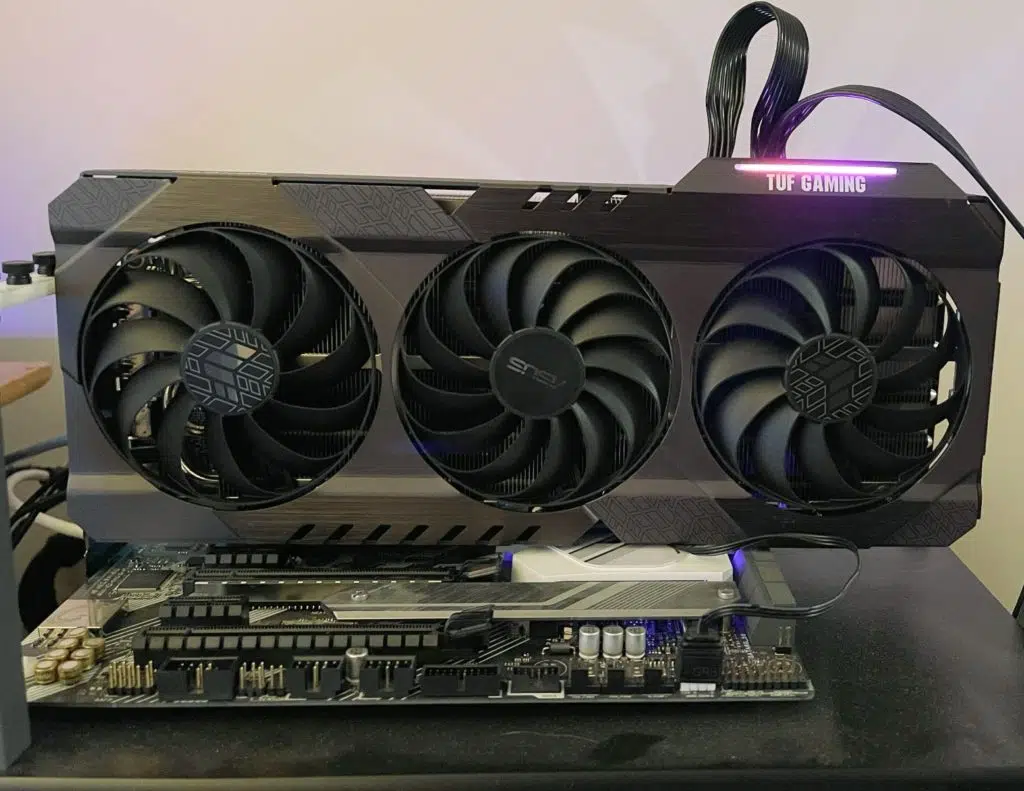
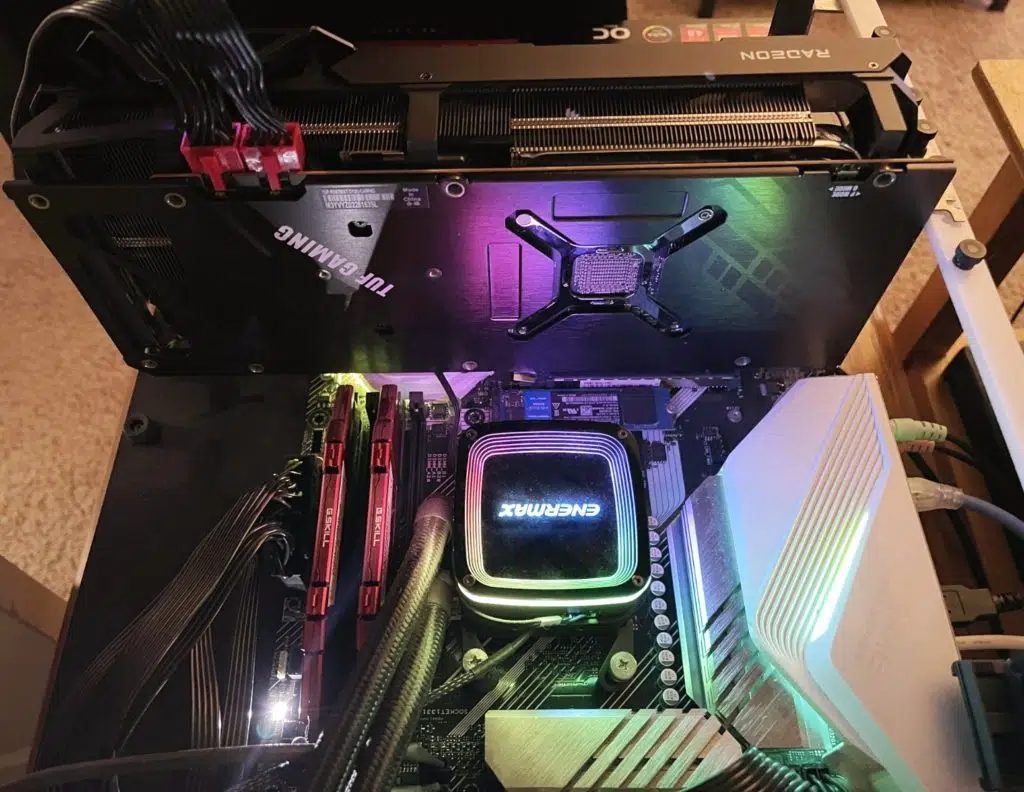
The RGB on this card is limited to the top rear of the card, towards the power connector, along with a shroud made entirely of machined aluminum which aids in this industrial design and grayscale color scheme aesthetic. We see limited branding although it’s still there, with a TUF Gaming badge under the RGB lighting, and a Radeon logo on the top near the I/O bracket. A lot of the pitfalls seen with overly gamer-focused designs are avoided here and it provides a nice option for people who find that aesthetic distasteful.
The video card is built with TUF Components, these are military-grade capacitors. They are soldered to the PCB using Auto-Extreme automated manufacturing with precise joints and the elimination of human error to meet rigorous specifications. The TUF has an armored undersize with a protective metal backplate that has a wide vent. Hot air can escape towards chassis exhaust fans. A GPU bracket provides extra stability and stainless steel is used for the I/O bracket.
The ASUS TUF Gaming Radeon RX 6700 XT OC Edition video card measures 12.68 inches length x 5.98 width x 2.9 slots in height. It is therefore much larger than a reference video card (10.5 inches length x 4.3 width and 2-slot in height), so make sure you have room in your case. It requires two 8-pin PCI-Express power connectors and the recommended PSU is 650W. Onboard are three DisplayPort 1.4a ports and one HDMI 2.1 port.
